Southern Reptile Ticks on Bluetongue Lizards (A Vector for Rickettsiosis) (includes many macro shots)
We share our property with an abundance of wildlife, including many snakes and lizards. One of those is the Blotched Bluetongue Lizard, Tiliqua nigrolutea, as seen below.
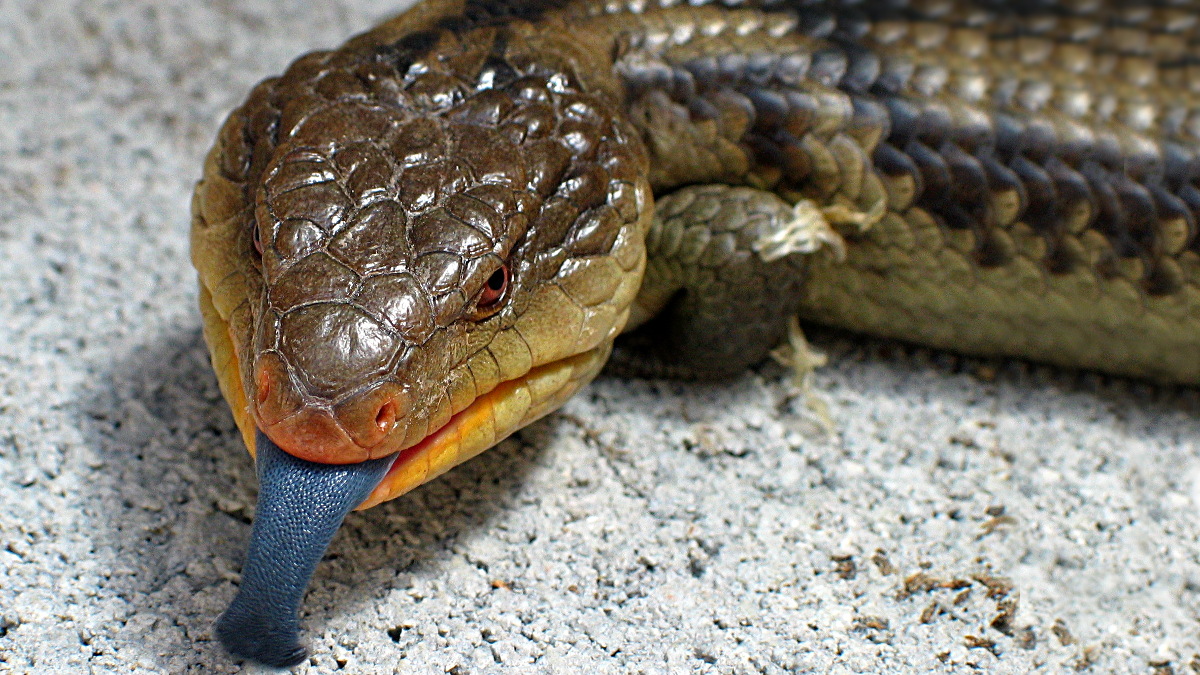
Blotched Bluetongue Lizard Tiliqua nigrolutea
Blue-tongue lizards are quite commonly parasitised by ticks. In fact, some species of tick only feed on reptiles. One particular individual we came across was quite heavily infested. The ticks were mostly at the back of the neck. However, one fully engorged tick in the lizards axilla, or armpit, was actually causing the lizard discomfort (judging by the way it was walking) so we decided to remove them. Of the nine ticks we removed there appeared to be three distinct types. I had originally thought that these were three separate species, but, thanks to the helpful advice from Dr Bruce Halliday and Prof. Michael Bull, I now know that they are all the same species. They are the Southern Reptile Tick, Bothriocroton hydrosauri formerly known as Aponomma hydrosauri. There were more ticks in the lizard's ears but I did not want to risk causing damage as their ear drums are close to the surface. A local herpetologist recommended putting vegetable oil on the ticks which should cut off their air supply and get them to drop off. This might be worth a try if you're squeamish, but it did not work for me. I’ve since been told:
"It is quite ok to physically pull the ticks from the ear. There may be a little bleeding but it is temporary, and probably far more effective than any oil treatment. Actually the ticks do little damage to the lizard unless there is an excessive load, and indeed they are just as much a component of the biodiversity as the lizards, so it is probably best just to leave the natural interaction intact. The fully engorged female tick you found in the axilla of the arm, may have caused a little discomfort, but they only remain in that state for a very short period of time before detaching to lay eggs."
Ticks, along with spiders, mites, and scorpions, are arachnids. According to the “Australian Faunal Directory” web site, there are two families of ticks in Australia. They are:
- Family Argasidae (Soft ticks)
- Family Ixodidae (Hard Ticks)
You can clearly see the scutellum (shield like plate at the back of the head) in two of my tick photos below which is a feature of Hard Ticks ( Ixodidae). Prior to receiving help with the identification, I had thought Tick C below was of the Argasidae, as there seemed to be no obvious scutellum. This turned out to be a case of not seeing the forest from the trees, as apparently, in the male, the scutellum covers the whole body.
So, do these ticks present any danger to humans? Read on after the images to find out.
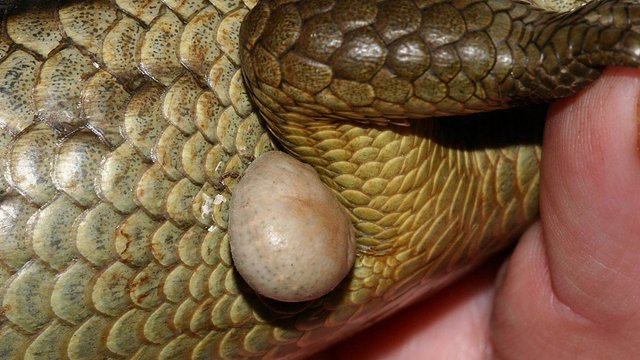
A fully gorged Southern Reptile Tick (Bothriocroton hydrosauri) in the the axilla, as well a a smaller tick underneath it.
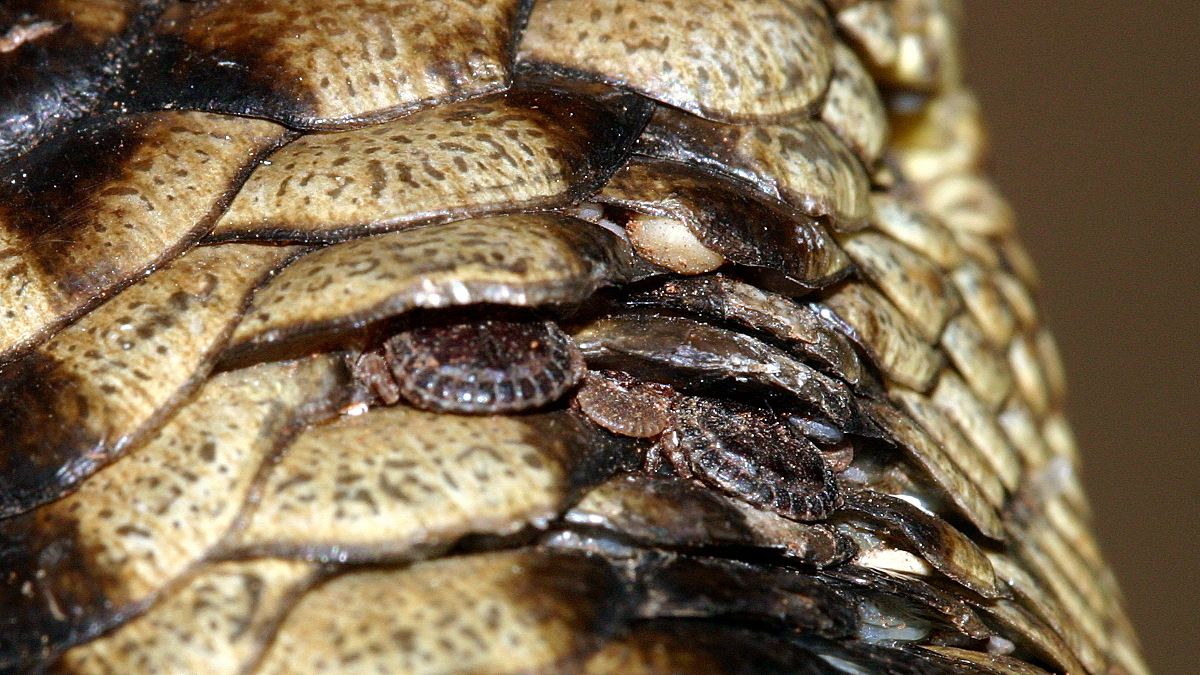
Ticks (Bothriocroton hydrosauri )under the scales on the back of the lizards neck.
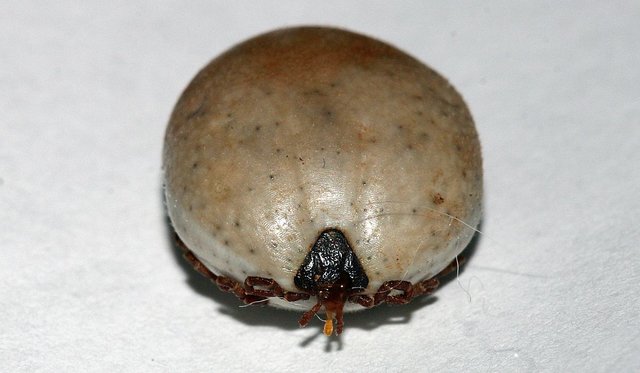
Tick A – Frontal view of an engorged female (Bothriocroton hydrosauri )
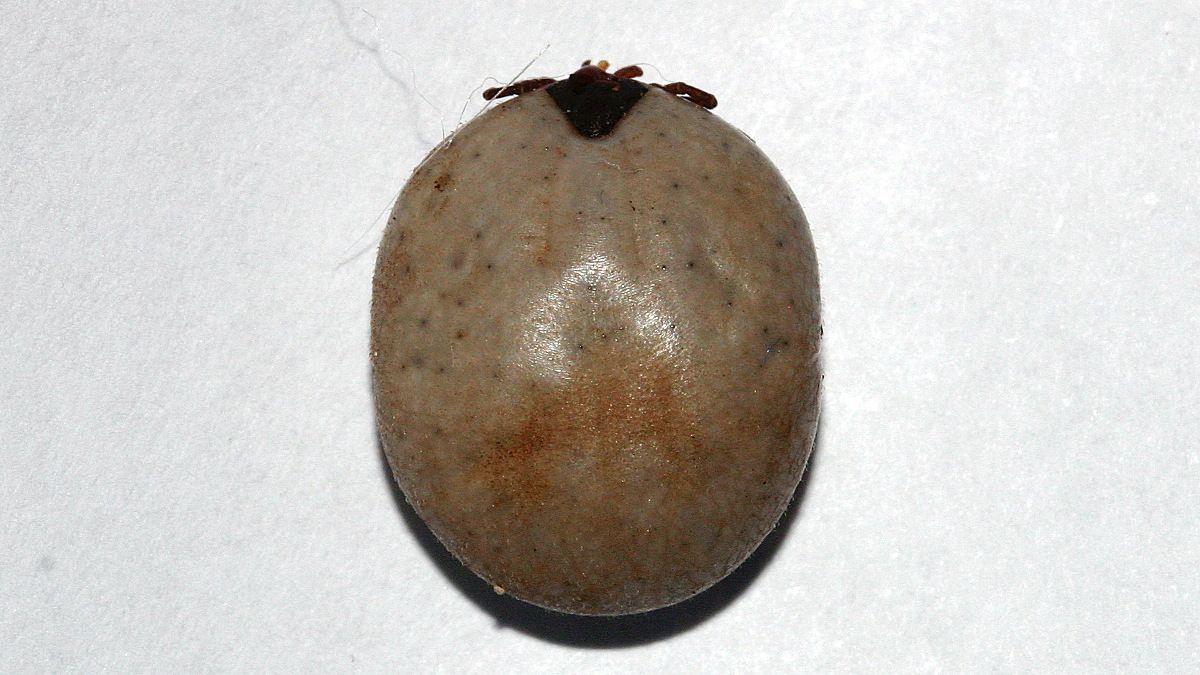
Tick A – Dorsal view of an engorged female (Bothriocroton hydrosauri )
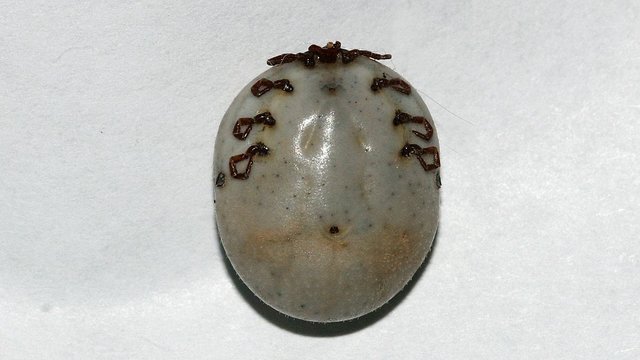
Tick A – Ventral view of an engorged female (Bothriocroton hydrosauri )
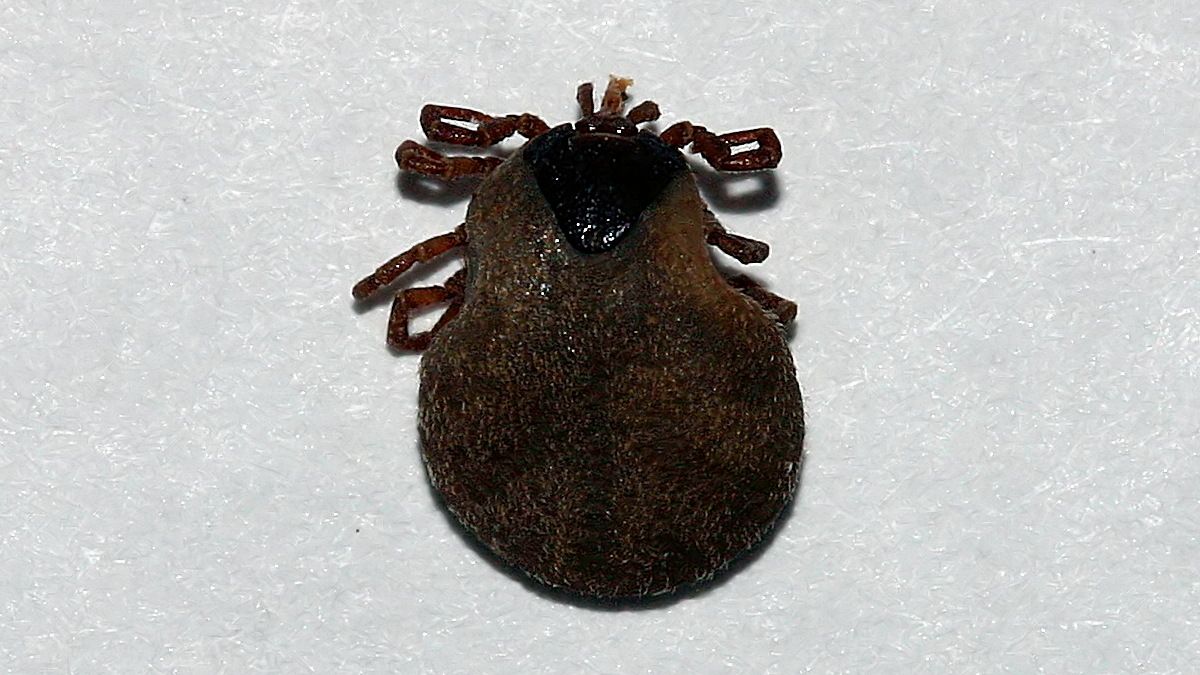
Tick B – A female in the unengorged state (Bothriocroton hydrosauri )
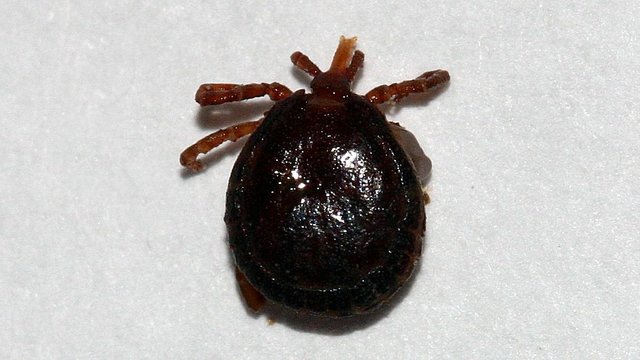
Tick C – A male (Bothriocroton hydrosauri) these do not become engorged like the females do
After removing the ticks, I placed them in a jar. Sure enough, the engorged female eventually laid eggs which hatched into many hundreds of tiny ticks. I regret not getting a photo of this, but, unfortunately, my scientific curiosity was no match for my desire to avoid hundreds of blood thirsty ticks. While they primarily feed on reptiles, they are believed to be a vector of a potentially fatal disease known as Rickettsiosis. It is spread when the bacteria, Rickettsia, is transferred via the ticks saliva. The southern reptile tick has been found to carry multiple species of the Rickettsia bacteria. Australia has four rickettsial diseases including, locally, one known as Flinders Island Spotted Fever. This causes a spotty, rash, fever, headache, and aches and pains.
References and Further Reading:
- Flinders Island Spotted Fever Rickettsioses Caused by “marmionii” Strain of Rickettsia honei, Eastern Australia
Nathan B. Unsworth, John Stenos, Stephen R. Graves, Antony G. Faa, G. Erika Cox, John R. Dyer, Craig S. Boutlis, Amanda M. Lane, Matthew D. Shaw, Jennifer Robson, Michael D. Nissen
Emerg Infect Dis. 2007 Apr; 13(4): 566–573. doi: 10.3201/eid1304.060087 - Rickettsia detected in the reptile tick Bothriocroton hydrosauri from the lizard Tiliqua rugosa in South Australia
H Whiley, G Custance, S Graves, J Stenos, M Taylor, K Ross, MG Gardner
Pathogens 5 (2), 41

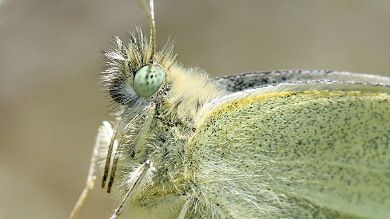
Cabbage White Butterfy 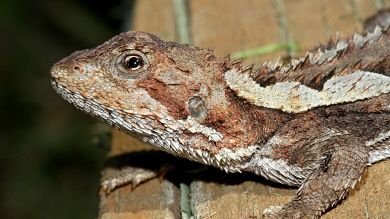
The Mountain Dragon 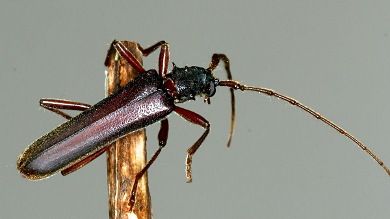
Longicorn Beetle 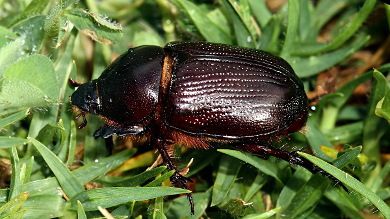
A Scarab Beetle Visits My Moth Trap |
This is absolutely fascinating. I had no idea that ticks like blue tongue lizards.
I wish you had taken that photo of all the baby ticks. That would be something to see I'm sure.
We have an population explosion of ticks on Eastern Long Island NY, USA. 3 types Deer, Lone Star and regular Dog tick.They are nasty critters that can carry multiple diseases. Great close-up pictures on your behave.
We have an population explosion of ticks on Eastern Long Island NY, USA. 3 types Deer, Lone Star and regular Dog tick.They are nasty critters that can carry multiple diseases. Great close-up pictures on your behave.
Interesting. Ticks on lizards... I didn't know these until I stumbled upon your post.. thanks foe sharing.
wow nice post! Up.